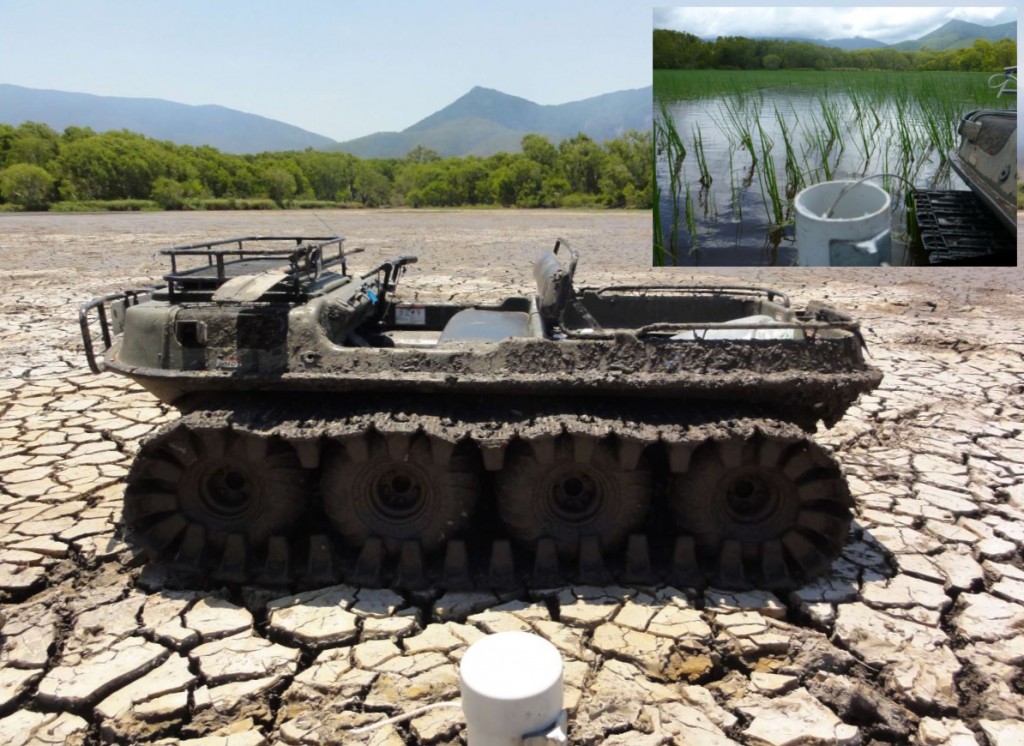
A healthy wetland? Because this pocket in the Cromarty wetlands can dry out completely for a couple of months each year it is able to resist invasion by some of the region’s worst aquatic weeds.
Wetlands in the important cane growing regions of the lower burdekin have a special problem: too much water. Water supply schemes aimed at providing irrigation water via the aquifer, streams and lagoons have changed what were once ephemeral or seasonally dry wetlands and waterways into permanently wet systems. Under this new hydrological regime, problem plants, both native and exotic, find favorable conditions for all-year growth and soon choke streams, swamps and lagoons, impacting on the local plants and animals adapted to wetlands that dry down or dry out altogether in the dry season.
The now completed Landscape Resilience project (2013-2016), funded through the Queensland government, aimed to take the message to growers in the region that the wetlands are in trouble and there’s something we can do to fix them. Many people in the region see the prosperity that irrigation water from the Burdekin Falls Dam has brought and see the extra water in the wetlands all year round as a good thing; wetlands need water, so the more water the better. It seems like common sense. Problems caused by this year-round supply of water, however, can be seen in wetlands across the Burdekin.
Key Objectives
The key objectives were:
- to manage for a return to seasonal drying or cycle which mimics natural Burdekin wetlands,
- foster greater understanding and stewardship of local wetlands,
- improve land management practices,
- improve local wader bird habitat and aquatic connectivity, and
- improve water use efficiency.
What did we do?
We worked with groups of 15 growers each year. We used water quantity related measurements to open two way discussions about the significance of our local wetlands and their connection with the Great Barrier Reef Lagoon and what growers can and are doing to reduce the impacts of excess water on these systems.
